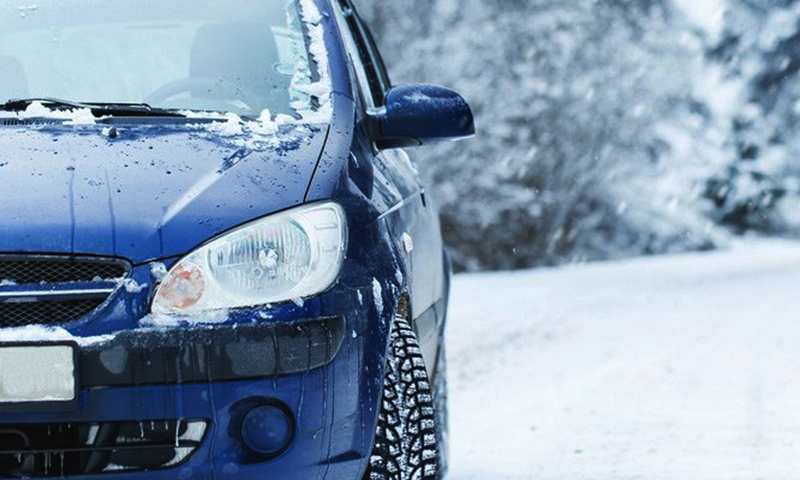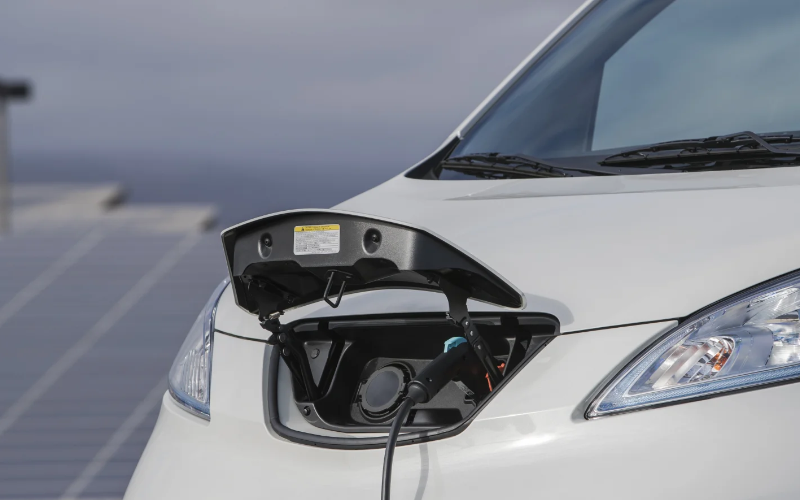Winterizing Your Car
The weather is chilling, and soon enough the winter will be upon us. For residents of the warmer states like Florida, Arizona and southern California, this doesn’t present too much of a problem. For those in the more temperate zones of the country, however, it means that driving conditions are set to get a lot more treacherous quite quickly.
To counter the wintry effects of the upcoming season, there are a number of things you can do to your car to get it ready. One thing, of course, is to replace it with a sturdy pickup truck with the tires and traction to handle anything winter can throw at it. On the other hand, if a car is still more your thing, you’ll need some more constructive plans. In today’s piece, we’ll be helping car owners winterize their rides.
1. Pre-Winter Servicing
While your entire driving experience is impacted by a harsh winter, there are certain key systems within your car that are particularly affected. These are systems that you should have checked and/or serviced to ensure they’re in optimal condition before winter sets in. The most important include:
- AWD/4WD System: Winter driving means traction is king. If your car is a AWD or 4WD model, then you should have your auto care specialist take a look, especially if your car is more than five years old. It needs to engage flawlessly, and have the optimum level of transmission fluid in before winter arrives.
- The Brakes: Though they may not be damaged by cold itself, they will be instrumental in controlling your vehicle safely in bad weather and in impaired road conditions.
- The Cooling System: Do you have a good stock of antifreeze? Do you know the best ratios to use? Check your manual if you’re not sure, or simply ask your mechanic to be absolutely clear. The typical effective antifreeze-water ratios are 50:50 and 70:30. The product itself may indicate on its outer packaging the best ratio for that formula to work.
- Belts, Hoses, Spark Plugs: Three small but critical components that are susceptible to wear and damage throughout the year. The difference is, however, that if they fail you in winter, you might be stranded in the middle of nowhere with a long, cold and perhaps dangerous wait for help.
- Battery: Have you ever noticed your smartphone battery suffering in the cold weather? The same thing happens with your car battery. Its power will decrease further as the temperature lowers. Less overall battery power means it’s harder to get the engine started. If the winter is especially severe, you could ask your mechanic to swap it for a winter-proof 600-cold-cranking-amp (CCA) battery.
- Oil: What’s the viscosity of your engine oil? If your car is very new, there’s a good chance you use a synthetic engine oil that has variable viscosity, but if not then you need to consider a switch. Engine oil reacts differently in varying temperature. When it gets cold, more viscous engine oils thicken and then fail to circulate. What you need is a thinner oil that even when thickening can still adequately lubricate the engine’s function.
The undercarriage of your car is also an area that gets quite the pummeling in winter. This is due to snow, ice, slush, road salt, mud and other substances that find their way onto the road more easily in those cold moths. If a thorough cleaning of the car’s undercarriage hasn’t been done in a while, right before winter is the perfect time to do it.
2. Pre-Winter Detailing
The undercarriage isn’t the only area that needs cleaning attention. If you’re an amateur detailer, then there are further steps that you should take to ensure protection on your car’s exterior. After you’ve serviced the car and ensured all components are in full working order, you should then look to clearing the paintwork of any and all contaminants. The best way to do this is with a thorough wash, clay bar and wax treatment.
Washing is the crucial first step, of course. Start with your alloy wheels, and tires, making sure that you get all caked dirt out of the tire tread. After that, work from the roof downward, only using car-safe products and avoiding household detergents. Once the car is thoroughly cleaned and the surface is free of any previously applied wax coatings, sealants or other products, you can start the next step.
A clay bar is a great pre-winter tool to help get rid of all the peskiest and most stubbornly embedded dirt from the tiny indentations and imperfections of your car’s paint. First you will need to lubricate the area you are going to treat, before then rubbing the clay bar as instructed over the surface. Its unique makeup can safely yank out those stuck-in contaminants without doing any harm to the coating.
The clay bar treatment will ensure your paintwork is free of any even deeply embedded dirt, and that means the conditions are perfect for your pre-winter car waxing. Using a synthetic formula will provide more protection in winter months. In these harsh conditions, it’s better to prioritize protection over shine. The freshly cleaned paint is in perfect condition to bond tightly with the polymers in your synthetic wax, and you’ll provide a strong, hydrophobic coating to help deflect the worst of the winter weather. It isn’t a shield, of course, and it won’t stop stone chippings or sharp objects from doing damage, but it’s a safeguard from the elements, at least.
3. Switching to Winter Tires
A number of drivers resist switching to proper winter tires. The most common reason they give is that they currently own “all-season” tires. Despite their name, these tires are not sufficient to cope with the more extreme winters experienced by places like Michigan, Minnesota, Wisconsin and the Northeastern United States.
To deal with such conditions, it is recommended that you purchase a set of winter tires and switch them out for these icy months. Storage can be a problem, but there are for-hire storage solutions that can help at relatively low cost. The difference in terms of safety is remarkable. Winter tires bring several key advantages over all-season tires:
Softer Rubber: The cold weather makes regular tire rubber stiffen, and that worsens overall traction. Anything that is susceptible to lower traction is not safe for winter driving. Winter tires are made from softer rubber that stays flexible even in very cold conditions.
Thicker Tread: Another clear advantage of winter tires is their thicker tread and more intricate tread patterns. The tread isn’t totally fool-proof, of course, but the specially designed patterns are made specifically to hold their own on snow and ice. They give you a much safer driving experience than all-season tires.
Studded Tires: For the most difficult conditions, you can even purchase winter tires with built-in studs for even greater traction. Whether or not you can use them will depend on local rules. They can be hard on road surfaces, depending on your car’s size and the relative condition of public roads in your area. For the most part, however, where the winter is worst, they are a useful option and a great choice.
Similar to studded tires, you might also look into mounting tire chains, but in our view, if the weather is extreme enough to warrant tire chains, it might not be a good idea to go driving out in the first place.
One more detail on your wheels — the alloy rims. It can be a good idea to switch them out for plain-old steel rims. It’s not essential, but steel rims are hardier, and using steel rims makes tire switching a lot easier. Once the spring arrives, you can go back to your beautiful alloys, but consider stronger more robust steel for the winter months.
4. Improve Visibility
Winter weather — snow, sleet, hail, icy rain and more — can seriously impair your visibility while driving. It’s not only harder for you to see other cars, pedestrians and intrepid winter cyclists, but also for any of them to be able to see you. Taking steps to ensure optimal visibility is, therefore, an essential winterization step.
Start with your headlights. When performing your washing and waxing mentioned above, spend a little extra time cleaning the lights. You might even consider using a headlight restorer or renewal kit to get the most impacting results. After that, the most crucial battle for line of sight begins — the windshield and rear window.
First of all, this time before winter is the perfect time to switch out your windshield wipers, especially if you either haven’t done that for a while, or you’re already noticing water streaks on the glass. You’ll need the wipers working at full capacity because winter roads come with added contaminants like additional mud, slush from melted snow, and road salt used to add traction for traffic. To that end, you should also check on your washer fluid levels regularly, making sure the reservoir is full or at least half-full for shorter journeys. You don’t want to get caught on the road with no ability to clear off the sight-obstructing dirt.
Next, check the heater and fans in the car, especially those that blast onto the windshield. When starting your car early in the morning, these functions will be essential for restoring visibility before setting off. They’ll also help get the car environment warmer and more comfortable for you. If your rear window is heated, you should also ensure that its function is not impaired.
5. Winter Emergency Kit
Finally, one more step to take when winterizing your car is to prepare an emergency kit to keep somewhere accessible and safe within your vehicle. You should prep this as early as possible, and keep stowed in the car throughout the entire winter. In fact, it’s not a bad habit to have emergency gear ready at any time of year, but in the winter it’s even more necessary.
Here are the essential items to have in your kit:
- First Aid Kit: If your breakdown is the result of an accident, minor or major, you’ll need this to clean up any cuts and bruises before helps arrives.
- Flashlight: If you need to exit your broken-down car at night to assess damage to report to breakdown recovery or someone else that you’re calling, a flashlight will help you a great deal. Don’t forget the batteries.
- Warm Clothing: Pack extra jackets, hats, socks, gloves, boots and anything else you might need if you’re stuck waiting for help and the heater isn’t working.
- Ice Scraper and Brush: When you park up for some time at the store or when you’re at work, the windshield can get pretty badly iced up again. An effective ice scraper can clear the worst of it off so you don’t have to wait for it all to melt away from the warming car.
- Non-Perishable Snacks: If you’re not sure how long you’ll be stuck, you’ll be able to maintain blood sugar and keep any kids happy with some basic snacks. Choose long-lasting items that won’t perish and be wasted.
- Water: If you’re in the middle of nowhere, it’s important to stay hydrated, no matter how cold it is. Help could be many hours away.
- Shovel: If you need to dig yourself out of a snow drift, a shovel Is the best way to do it. You can get great products that fit right in your trunk without taking up too much space.
- Smartphone Charging Cable: Your new car might have a wireless charging platform, which is handy, but older ones will still rely on you having a charging cable you can attach to your car.
- Smartphone Portable Charger: The cable is best when your car still has power, but in the event that it doesn’t, then you will be glad you packed a charged portable unit that can keep you cell phone charged until help gets there.
- Antifreeze and Windshield Washer: These two vital fluids are ones that you definitely don’t want to run out of. Always keep an extra supply.
Stay Safe on Winter Roads
The more you are prepared for the extremities of the winter season, the safer you will be on the roads. Take the necessary steps we mention above, as well as other small steps like keeping the gas tank at least half full to help prevent fuel line freezing, and even taking some advanced driving lessons if your experience dealing with winter roads is a bit thin. If you’ve just relocated from Florida to Maine, this might be a good idea.
Take the right steps, and stay safe wherever you’re going.



